The 10 most beautiful ancient towns in China contain 10 characteristic ancient towns in China, representing the main features of the concentrated areas of ancient towns.The 10 Most beautiful Ancient Towns In China are:
1.Huangyao Ancient Town(黄姚古镇)
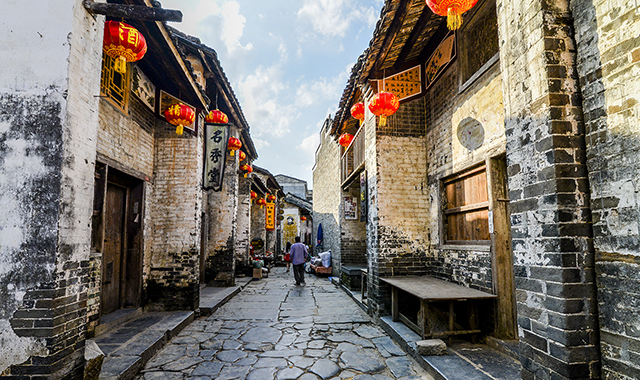
Huangyao is located in Zhaoping County, Guangxi, 200 kilometers away from Guilin. It is an ancient town of Ming and Qing with a history of more than 900 years. It is located in the lower reaches of the Minjiang River and is known as the “Poetry Homeland”. The ancient town has a square of 1 square kilometer and is a typical karst landform.
Huang Yao is a poetic place. Every outside attraction does not need to be deliberately searched. Walk slowly along the stone road. Maybe you may find something unexpected to you.
There are more than 600 households and eight streets in the town. Most of the houses are kept in Ming and Qing style, and the streets are made of bluestone slabs. There are more than 20 temples and temples in the ancient town, and there are more than 10 pavilions and pavilions, mostly Ming and Qing architecture. The famous ones are Civilized Pavilion, Baozhuguan, Xingyu Temple, Lion Temple, Ancient Stage, Wujiatun, Guojiatun, Zuolong Temple, Jianlong Temple, Long Bridge, Hulong Bridge, and natural pavilion. The cultural landscape also includes Han Yu, Liu Zongbiao ink, Qian Xing martyrs statue, He Xiangning, Gao Shiqi, Qianjiatun and other cultural celebrities, as well as many poetry inscriptions. In general, the more conventional attractions include the Memorial Hall of the Communist Party of China’s Guangxi Provincial Working Committee, the Ancient Stage, the Emperor’s Seal, the Baozhuuan, the squid street, the Eight Immortals, the Zuolong Bridge, the Millennium Ancient Temple, and the Lingnan First Slate Street.
2.Danba Tibetan Village(丹巴藏寨)
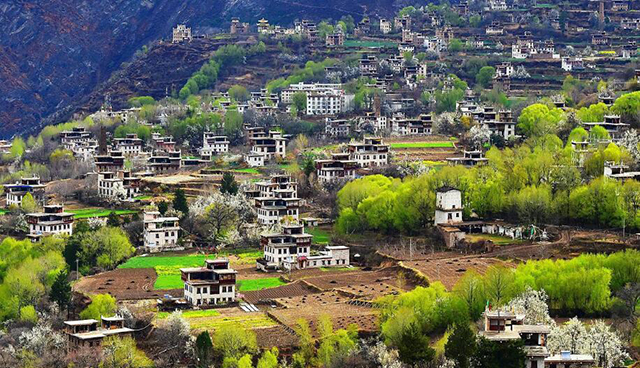
Danba County is located in the eastern part of the Ganzi Tibetan Autonomous Prefecture in western Sichuan. It borders Daofu, Kangding County and Aba Prefecture Xiaojin and Jinchuan County. The county has a total area of 5,649 square kilometers. It administers a town of 14 townships and is dominated by Tibetans. There are more than 57,000 people in 15 ethnic groups. Danba County is a place where the Bayan Hara Mountains and the Lushan Mountains gather. It is also the origin or flow path of the Geshza River, the Yak River, and the Jinchuan River. It is known as the “City on the Rock” and the “Dadu River”. The title of a city. Here the mountains are rolling, the lakes are falling, and the forests are boundless. The local Tibetans include this feature as “the top of the mountain is covered with snow, the mountainside is lush, and the mountain is at the foot of the sea.” It is a little-known hideaway hidden in the Hengduan Mountains. It is a magnificent and charming scenery, an infinite mysterious beauty valley, a quiet and poetic local house, a unique ancient stone tower, and a colorful style. The magic and beauty of DanBa.
3.Ancient village on the shores of Kanas Lake(喀纳斯湖畔古村落)
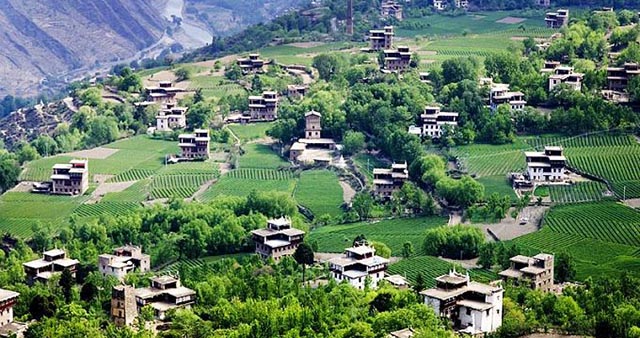
Tuwa Village is located in the Kanas River Valley, 3 km south of Kanas Lake. It is surrounded by beautiful mountains and beautiful scenery. It is the only way for Burqin County to travel to Kanas Lake. There are more than 100 households and more than 1,400 people living in Tuva Village. The Tuva people live in a tower-shaped wooden house built of pine. This kind of building is called a “wooden house”. The four walls are all made of logs. The ceiling has a floor and the roof is sharp and inclined to adapt to the rainy and snowy mountains. surroundings.
The production lifestyle of the Tuva people is mainly based on animal husbandry, supplemented by hunting, fishing and gathering. In the spring season, they rushed the cattle and sheep to the summer pastures in the mountains; in the late autumn, they rushed the animals down the mountain and lived in the wooden house for a long winter. The Tuwa people mainly live in Hemu Village and Kanas Village of Hemu-Kanas Mongolian Nationality Township, and Baihaba Village, 18 km west of Kanas Lake, with a population of about 2,000.
4.Wuyuan Ancient Town(婺源古镇)
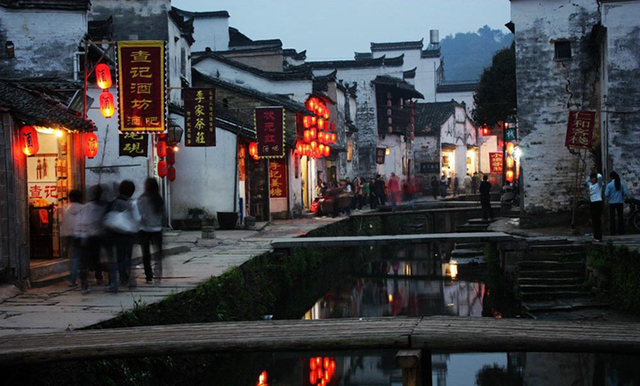
Jiangxi Province, Shangrao District, the largest tea production base in Jiangxi. It is located in the upper reaches of Le’an River in northeastern Yunnan, bordering Anhui in the north and Zhejiang in the east. It covers an area of 2,947 square kilometers and has a population of 324,400. The county government is stationed in Ziyang Town. Tang County, the Northern Song Dynasty Huizong Xuanhe three years (1121) is affiliated to Huizhou. In 1934, it was transferred from Anhui to Jiangxi. The county is dominated by mountains and hills, accounting for about 80% of the total area. The rest are low hills and hills. The highest peak is at the junction with Anhui Province, at an altitude of 1630 meters. It belongs to the mid-subtropical humid monsoon climate. The annual precipitation is 1500~2000 mm, which is beneficial to the growth of forest trees. The county’s forest land accounts for 49% of the land area, and the standing stock volume is more than 8.2 million cubic meters. It is rich in pine, fir, bamboo and tea, oil tea, mushrooms and so on. Tea production often accounts for 1/3 of the province’s total. Green tea is called “green” and is the same as “Ninghong” in Wuning County. Other native products include dragontail owls and enamel inks. Mineral resources include coal, iron, tungsten, gold, copper and vermiculite.
5.Wuzhen(乌镇)
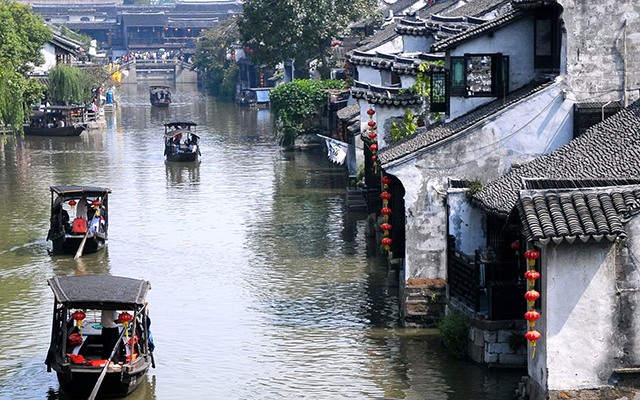
Wuzhen is one of the six ancient towns in the south of the Yangtze River. The four old streets of the east, west, south and north of the ancient customs are crossed by the “ten” characters, forming a pattern of ancient towns with parallel chessboards and parallel rivers and rivers. The residential houses here are built on the banks of the river. There are a large number of Ming and Qing buildings on both sides of the street, supplemented by stone bridges on the river, reflecting the charm of Jiangnan ancient towns with small bridges, flowing water and ancient houses. The Zhizhi Academy in Zhendong is the reading office of Mao Dun when he was a teenager. It is now a memorial hall for Mao Dun, a national key cultural relics protection unit. The Xizha Old Street in the town is one of the best preserved Ming and Qing buildings in China.
6.Zhouzhuang(周庄)
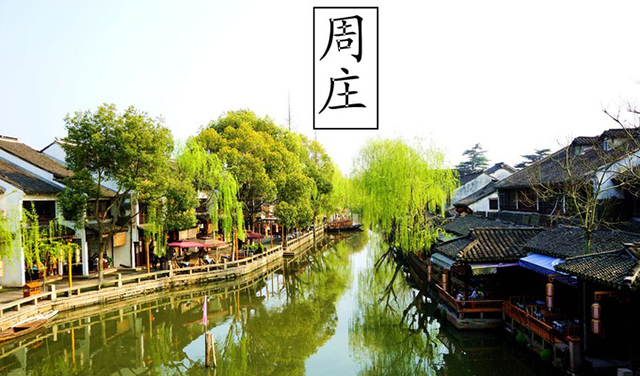
History is contained in Zhouzhuang in 1086, located between Shanghai, Suzhou and Hangzhou. The town is Zeguo, surrounded by water, and is within easy reach. The town is surrounded by rivers and rivers, connected by bridges and streets, deep houses, high ridges, rivers and galleries, cross-street arcades, bamboo slabs, rivers and waters, and simple and quiet. It is a typical small bridge in Jiangnan.
Zhouzhuang, which was born in the vicissitudes of the millennium and rich in Wudi culture, has become a treasure of oriental culture with its beautiful water features, unique human landscape and simple folk customs. As an outstanding representative of China’s outstanding traditional culture, Zhouzhuang has become the cradle of Wudi culture and a model of Jiangnan water town. Listed by UNESCO as a World Heritage List, won the Dubai International Best Practice Award for Living Environment Improvement, United Nations Asia Pacific World Cultural Heritage Protection Outstanding Achievement Award, US Government Award, the world’s most attractive water town and China’s first batch of top ten Famous historical and cultural towns, Chinese environmental awards, national health towns, and beautiful national towns and towns.
7.Tongli Town(同里镇)
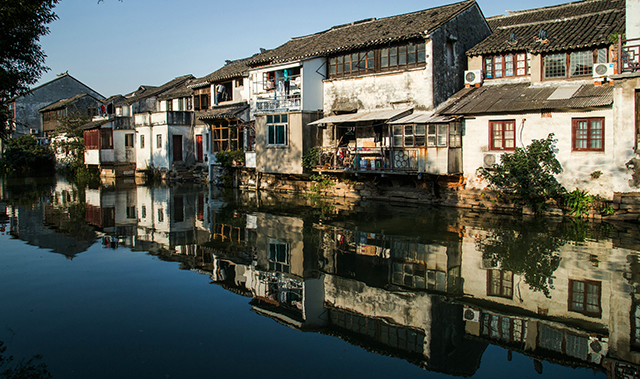
Tongli Town is located in the east of the ancient canal on the bank of Taihu Lake. She was founded in the Song Dynasty and has a history of more than 1,000 years. It is a veritable water town. Tongli Town is 18 kilometers away from Suzhou City and 80 kilometers away from Shanghai. It is one of the six famous water towns in the south of the Yangtze River. It covers an area of 33 hectares and is surrounded by five lakes. The town is divided into seven islands by a network of rivers. The ancient town has a beautiful scenery and the water is surrounded by the town. She was the earliest (1982) in Jiangsu Province and the only ancient town that used the town as a cultural relics protection unit. In 1995, it was listed as the first batch of historical and cultural towns in Jiangsu Province. In 1998, the ancient town of Shuixiang and the retreat garden were included in the list of world cultural heritage preparations.
8.Xitang Ancient Town(西塘古镇)
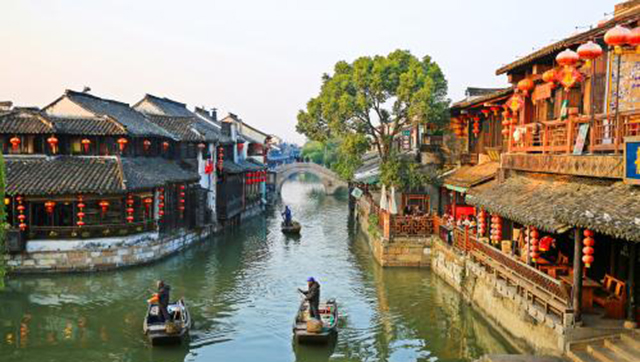
Ancient Town Xitang is located in Jiashan County, Jiaxing City, Zhejiang Province, 11 kilometers away from Jiashan County. Xitang is an ancient town with thousands of years of history and culture. As early as the Spring and Autumn Period and the Warring States Period, Wu and Yue were the intersections of the two countries. Therefore, they were known as “Wu Gen Yue Jiao” and “Fujiao People”. The market was initially formed in the Yuan Dynasty. The biggest difference between Xitang and other ancient towns is that there are corridors in the streets of the ancient towns, with a total length of nearly 1,000 meters, just like the promenade of the Summer Palace. Traveling in Xitang, rainy days do not rain, sunny sun can not reach.
9.Chikan Ancient Town(赤坎古镇)
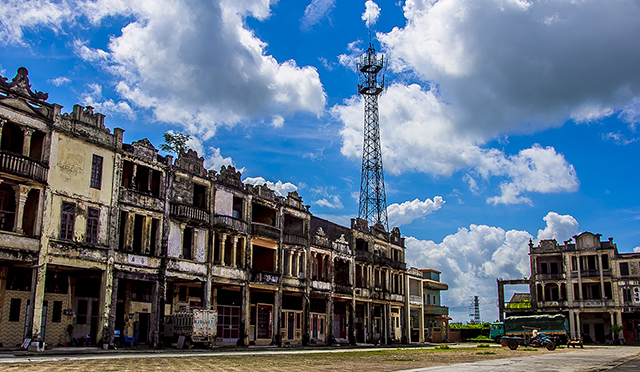
Chikan Ancient Town is located in the middle of Kaiping City under the jurisdiction of Jiangmen City. It is 12 kilometers away from the Kaiping Central City and has a history of more than 350 years. It is an ancient town with rich Lingnan characteristics and profound cultural heritage. Tanjiang traverses the whole town, with a total population of 48,000. The overseas Chinese, Hong Kong, Macao and Taiwan compatriots total 72,000 people. It is a famous hometown of overseas Chinese. There are a large number of overseas Chinese buildings in Chikan, and there is a combination of Chinese and Western. Chikan is built along the Tanjiang River. The south bank is a village. The north bank is a town, a one-of-a-kind arcade, and a huge group of foreign buildings. Chikan’s gameplay is a leisurely surf, and it seems that the experience on the old street is still in the 1980s. There are also towers in the ancient town, and the well-known Guan and Stuart Library and the embankment buildings of Dixi Road are the hometown of overseas Chinese. They have been designated as cultural relics protection units by the provincial government.
10.Futian Ancient Town(富田古镇)
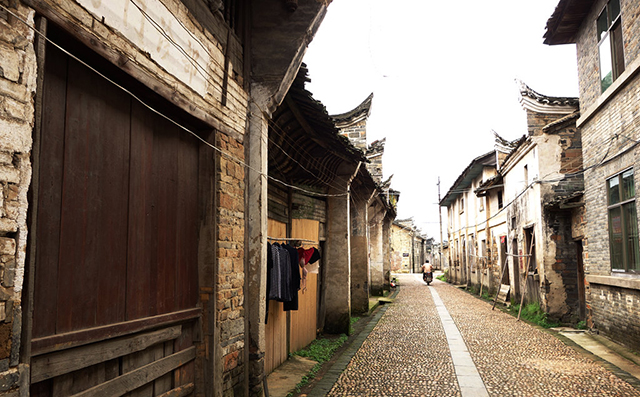
Futian Town is a national tourist scenic spot, an ancient town with more than 1,800 years of history. It is a proverb. It is the hometown of national hero Wen Tianxiang, famous historian Luo Bi and former Shanghai Municipal Party Committee Secretary Hu Lijiao. It is an important birthplace of Fuling culture. It was Dad who went there to shoot the third season, and the red, patina and green tourism resources complement each other. It is 46 kilometers away from the urban area of Ji’an. The town covers an area of 216 square kilometers and has a population of about 30,000. The dialect language is spoken in the territory, basically the Jiangyou folk system. In 2010, it was awarded the title of China’s historical and cultural town by the Ministry of Housing and Urban-Rural Development and the State Administration of Cultural Heritage. In 2012, it was awarded the National Ecological Town by the Ministry of Environmental Protection. On January 20, 2015, the second batch of livable towns in China was announced. It is the oldest town in China with the most traditional villages!